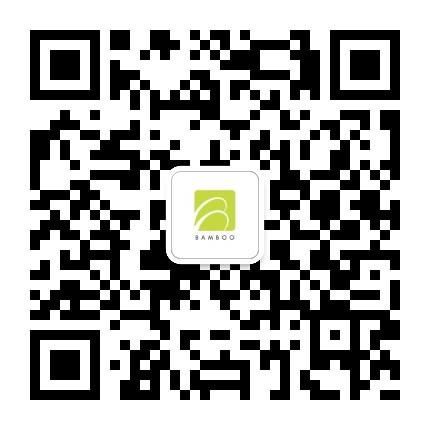
By Johan Olausson
Go it alone or get help? And what makes good content?
After the two initial steps of setting your goals and mission statement, it’s time to get to work. Good content builds brand awareness, generates leads, increases engagement and sales, turns prospects into customers and makes existing customers more loyal. But we always point out that developing this will take time or money, or both, and it’s a long-term investment. So you need to make sure that you either have very good people in-house who can do this, and – this is important – have the time to do it, or that you have a budget to hire a good agency to do it for you. Obviously we’re biased, but there are advantages with letting an agency such as Bamboo take care of it for you.
One advantage is that it’s good to have a fresh set of eyes when looking at what it is you do and why it matters to customers and other stakeholders. An outsider looking in also has often has an advantage when it comes to contextually connecting the dots about what you do. And this leads me to something we always tell our customers: Don’t just talk about yourself, talk about the industry, trends, technology and your customers. Nobody likes self-centred people, and the same goes for companies.
When we ask people and businesses in China and in Asia – often our customers’ customers – what they’re interested in, they often tell us it’s case studies related to their industry or business. This is something that, if applied right, can add substantial value to their business right away. That’s why we recommend our clients to utilise this powerful tool, and that’s why we develop a lot of customer case studies for them, both in the form of articles for printed publications or online publishing as well as videos used on the web or at events such as exhibitions.
Something else that people and businesses here really value is industry knowledge: for instance, what technology developments, innovations, trends and applications are impacting or will impact their industry and in turn their company’s business. We encourage our clients to become industry thought leaders by utilising in-house specialists or industry experts together with our research and journalistic capabilities. This can be used in a multitude of formats and channels, from white papers and reports online to offline seminars.
What else do I need, apart from great content?
It doesn’t matter whether you have the most engaging content in your industry if nobody reads it. You need to go back to your goals and your mission statement. Depending on what your goals are, what kind of company you are, and how you would like to portray your brand, you need to choose the right channels to broadcast your content. Obviously, you need a bigger budget or more man-hours the more channels you want to employ. But one beautiful thing with content marketing and storytelling is that you can re-use content, perhaps edited a bit differently across different channels. Channels that you own yourself.
You also need an editorial team to ensure that you consistently have the right kind of content and that you schedule the publishing in a way that meets your goals.
As for the right kind of content, it’s important to stress that successful content marketing is based on high quality content, so don’t try to do too much too soon. As for content scheduling, this is really key to successful content marketing. You need to look at not only your own activities but also what’s happening in the market and in the industry – for example, when key events are taking place. You may also want to schedule differently for different markets. Some Western companies still don’t realise that it doesn’t make much sense to go all in around Chinese New Year here in China, for instance. An editorial team can be made up of in-house people, run by an agency, or a combination. The latter is what we would recommend.
Print or digital? Or perhaps both?
New customers often ask us if they should do print or digital. Sometimes they’ve already made their minds up. We always say, you need to look at your goals and at your target audience. What is best aligned with your goals? How does your target audience prefer to receive and read information? It’s also important to stress that it can be better to use channels that few others in your field do, and not to be part of the crowd. Some people say for instance that print is dead, while others argue that print is still king.
We say that it often makes sense to do both, provided that you have the budget or in-house resources. And with digital printing it’s cheaper than it used to be to do a printed version for select readers for instance. For some clients we use the same content and the same InDesign files to create both printed and digital/mobile publications such as customer-owned magazines or marketing material. If you have to choose, then do so wisely – depending on type of content, scheduling and target audience. If you want to build brand awareness among high-level decision makers in China and Asia, a premium-feel printed magazine published quarterly might be better than digital channels. If you want to reach technical buyers with time based information once a week and your sales team in China already communicate with them through WeChat, you should consider setting up an official WeChat account for example.
For digital, the main channel is obviously your website, which should be the hub of all your online content. Apart from this we recommend a good mix of social-media channels, mobile messaging apps, and video sites. A key channel is also email. A lot of people think that email marketing is dead, but your message is five times more likely to be seen through email than Facebook. What’s more, you’re six times more likely to get a click-through on email than on Twitter. All channels used should be relevant in terms of your goals and your target audience and external channels should drive traffic to your website. Some companies should do LinkedIn but not Facebook, but this is not obvious to everybody.
For print, the channels of choice are shorter newsletters, or a proper customer magazine. If you have time-based content and want to publish more regularly, then you may want to consider a monthly newsletter. If you feel your content is more in-depth, with longer articles, perhaps a quarterly published magazine is better. Always look at your goals and at your mission statement.
You can also strive to have your content published in other channels. This can be done by ensuring that you have relevant content, written professionally, before you contact writers and editors at the online and print channels. Either do it yourself, or have an agency such as Bamboo do it for you.
Summary
If you use content marketing as a part of your branding and communications strategy consistently, over time you’ll see that by giving your customers free information that makes them smarter and adds value to their business, they will reward you with both brand loyalty and by giving you more of their business.





Follow us on